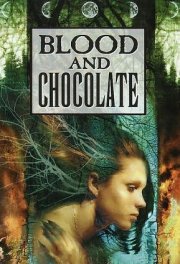Werewolves seem to be going out of fashion. Having read far too many submission guidelines for agents and publishers recently, there seems to be a consensus that vampires and werewolves have had their run. On that note, apparently dystopian literature is also on its way out, which is a discussion for a whole other post, but I will note that, vampires, werewolves, and dystopian literature have been around for far longer than Twilight or the The Hunger Games. These kinds of genres come in waves and I say give it another decade and they’ll be all the craze again.
I mention all this because Blood and Chocolate by Annette Curtis Klause was published in 1997, almost two decades from the time of this post, and it shows how these kinds of narratives will always exist. If you’re after a werewolf story that blows Twilight out of the water, than I highly recommend it. Unlike Bella Swan, the main character in Blood and Chocolate is strong, independent, and fierce. Vivian Gandillion is a sixteen-year-old werewolf. She was born a werewolf into a family of werewolves, and she relishes the change she makes from her human body to her beast form. What makes this story particularly brilliant is how it address the issues of gender. In a family (or pack) that’s structured by the traditional roles which include an alpha male, Vivian struggles with the role assigned to her. When her father, the alpha, dies, Vivian is disgusted with how her mother acts in maintaining her place in the pecking order, and Vivian refuses to participate. And then she falls in love with a human boy.
While the romance between Vivian and Aiden is sweet like any first teenage love, it’s secondary to Vivian’s own personal struggles in defining herself and her relationship with her own body. While I was kind of hoping for a slightly different ending (and I won’t spoil it), the majority of this narrative is empowering for teenage girls who are dealing with the social dynamics of school while their bodies change. Vivian’s transformation from human to wolf (especially around the full moon) is just like the transformation girls undergo from child to woman, but instead of seeing her change as monstrous, Vivian embraces it. It’s nice to see a story where the monster is eventually welcomed, and it reminds me of Angela Carter’s versions of “Little Red Riding Hood” in her short story collection The Bloody Chamber. This is the kind of story teenage girls should be reading, and I would give it a solid four out of five wolves howling at a full moon.

